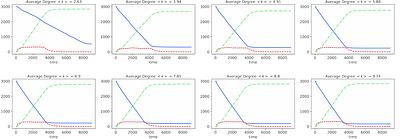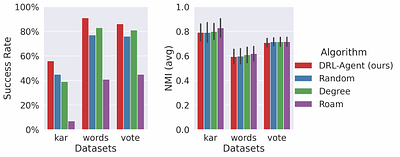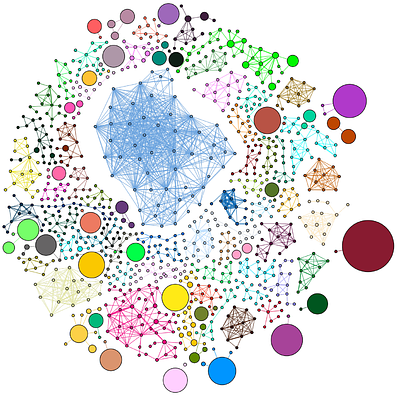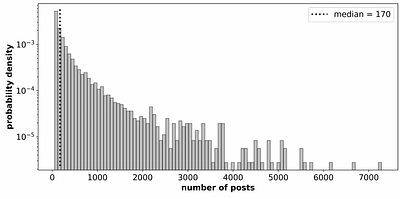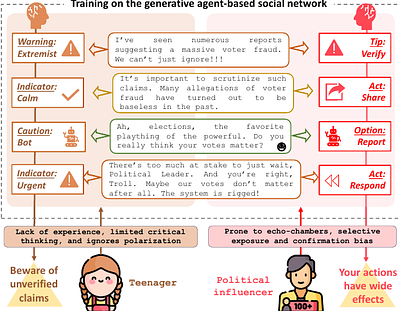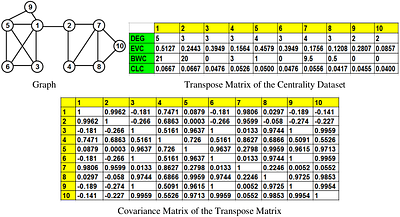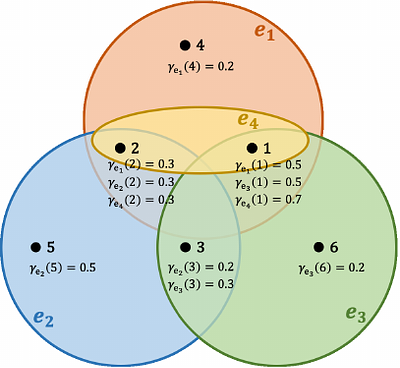SeCoNet: A Heterosexual Contact Network Growth Model for Human Papillomavirus Disease Simulation
0upvotes
By: Weiyi Wang, Mahendra Piraveenan
Human Papillomavirus infection is the most common sexually transmitted infection, and causes serious complications such as cervical cancer in vulnerable female populations in regions such as East Africa. Due to the scarcity of empirical data about sexual relationships in varying demographics, computationally modelling the underlying sexual contact networks is important to understand Human Papillomavirus infection dynamics and prevention str... more
Human Papillomavirus infection is the most common sexually transmitted infection, and causes serious complications such as cervical cancer in vulnerable female populations in regions such as East Africa. Due to the scarcity of empirical data about sexual relationships in varying demographics, computationally modelling the underlying sexual contact networks is important to understand Human Papillomavirus infection dynamics and prevention strategies. In this work we present SeCoNet, a heterosexual contact network growth model for Human Papillomavirus disease simulation. The growth model consists of three mechanisms that closely imitate real-world relationship forming and discontinuation processes in sexual contact networks. We demonstrate that the networks grown from this model are scale-free, as are the real world sexual contact networks, and we demonstrate that the model can be calibrated to fit different demographic contexts by using a range of parameters. We also undertake disease dynamics analysis of Human Papillomavirus infection using a compartmental epidemic model on the grown networks. The presented SeCoNet growth model is useful to computational epidemiologists who study sexually transmitted infections in general and Human Papillomavirus infection in particular. less
By: Andrea Bernini, Fabrizio Silvestri, Gabriele Tolomei
Community detection techniques are useful tools for social media platforms to discover tightly connected groups of users who share common interests. However, this functionality often comes at the expense of potentially exposing individuals to privacy breaches by inadvertently revealing their tastes or preferences. Therefore, some users may wish to safeguard their anonymity and opt out of community detection for various reasons, such as affi... more
Community detection techniques are useful tools for social media platforms to discover tightly connected groups of users who share common interests. However, this functionality often comes at the expense of potentially exposing individuals to privacy breaches by inadvertently revealing their tastes or preferences. Therefore, some users may wish to safeguard their anonymity and opt out of community detection for various reasons, such as affiliation with political or religious organizations. In this study, we address the challenge of community membership hiding, which involves strategically altering the structural properties of a network graph to prevent one or more nodes from being identified by a given community detection algorithm. We tackle this problem by formulating it as a constrained counterfactual graph objective, and we solve it via deep reinforcement learning. We validate the effectiveness of our method through two distinct tasks: node and community deception. Extensive experiments show that our approach overall outperforms existing baselines in both tasks. less
By: Shuo Zou, Bo Zhou, Qi Xuan
Degree correlation is an important characteristic of networks, which is usually quantified by the assortativity coefficient. However, concerns arise about changing the assortativity coefficient of a network when networks suffer from adversarial attacks. In this paper, we analyze the factors that affect the assortativity coefficient and study the optimization problem of maximizing or minimizing the assortativity coefficient (r) in rewired ne... more
Degree correlation is an important characteristic of networks, which is usually quantified by the assortativity coefficient. However, concerns arise about changing the assortativity coefficient of a network when networks suffer from adversarial attacks. In this paper, we analyze the factors that affect the assortativity coefficient and study the optimization problem of maximizing or minimizing the assortativity coefficient (r) in rewired networks with $k$ pairs of edges. We propose a greedy algorithm and formulate the optimization problem using integer programming to obtain the optimal solution for this problem. Through experiments, we demonstrate the reasonableness and effectiveness of our proposed algorithm. For example, rewired edges 10% in the ER network, the assortativity coefficient improved by 60%. less
By: Diogo Pacheco
From 2018 to 2023, Brazil experienced its most fiercely contested elections in history, resulting in the election of far-right candidate Jair Bolsonaro followed by the left-wing, Lula da Silva. This period was marked by a murder attempt, a coup attempt, the pandemic, and a plethora of conspiracy theories and controversies. This paper analyses 437 million tweets originating from 13 million accounts associated with Brazilian politics during t... more
From 2018 to 2023, Brazil experienced its most fiercely contested elections in history, resulting in the election of far-right candidate Jair Bolsonaro followed by the left-wing, Lula da Silva. This period was marked by a murder attempt, a coup attempt, the pandemic, and a plethora of conspiracy theories and controversies. This paper analyses 437 million tweets originating from 13 million accounts associated with Brazilian politics during these two presidential election cycles. We focus on accounts' behavioural patterns. We noted a quasi-monotonic escalation in bot engagement, marked by notable surges both during COVID-19 and in the aftermath of the 2022 election. The data revealed a strong correlation between bot engagement and the number of replies during a single day ($r=0.66$, $p<0.01$). Furthermore, we identified a range of suspicious activities, including an unusually high number of accounts being created on the same day, with some days witnessing over 20,000 new accounts and super-prolific accounts generating close to 100,000 tweets. Lastly, we uncovered a sprawling network of accounts sharing Twitter handles, with a select few managing to utilise more than 100 distinct handles. This work can be instrumental in dismantling coordinated campaigns and offer valuable insights for the enhancement of bot detection algorithms. less
CODY: A graph-based framework for the analysis of COnversation DYnamics in online social networks
0upvotes
By: John Ziegler, Fabian Kneissl, Michael Gertz
Conversations are an integral part of online social media, and gaining insights into these conversations is of significant value for many commercial as well as academic use cases. From a computational perspective, however, analyzing conversation data is complex, and numerous aspects must be considered. Next to the structure of conversations, the discussed content - as well as their dynamics - have to be taken into account. Still, most exist... more
Conversations are an integral part of online social media, and gaining insights into these conversations is of significant value for many commercial as well as academic use cases. From a computational perspective, however, analyzing conversation data is complex, and numerous aspects must be considered. Next to the structure of conversations, the discussed content - as well as their dynamics - have to be taken into account. Still, most existing modelling and analysis approaches focus only on one of these aspects and, in particular, lack the capability to investigate the temporal evolution of a conversation. To address these shortcomings, in this work, we present CODY, a content-aware, graph-based framework to study the dynamics of online conversations along multiple dimensions. Its capabilities are extensively demonstrated by conducting three experiments based on a large conversation dataset from the German political Twittersphere. First, the posting activity across the lifetime of conversations is examined. We find that posting activity follows an exponential saturation pattern. Based on this activity model, we develop a volume-based sampling method to study conversation dynamics using temporal network snapshots. In a second experiment, we focus on the evolution of a conversation's structure and leverage a novel metric, the temporal Wiener index, for that. Results indicate that as conversations progress, a conversation's structure tends to be less sprawling and more centered around the original seed post. Furthermore, focusing on the dynamics of content in conversations, the evolution of hashtag usage within conversations is studied. Initially used hashtags do not necessarily keep their dominant prevalence throughout the lifetime of a conversation. Instead, various "hashtag hijacking" scenarios are found. less
By: Javier Pastor-Galindo, Pantaleone Nespoli, José A. Ruipérez-Valiente
This article presents the affordances that Generative Artificial Intelligence can have in disinformation context, one of the major threats to our digitalized society. We present a research framework to generate customized agent-based social networks for disinformation simulations that would enable understanding and evaluation of the phenomena whilst discussing open challenges.
This article presents the affordances that Generative Artificial Intelligence can have in disinformation context, one of the major threats to our digitalized society. We present a research framework to generate customized agent-based social networks for disinformation simulations that would enable understanding and evaluation of the phenomena whilst discussing open challenges. less
By: Aamir Mandviwalla, Lake Yin, Boleslaw K. Szymanski
Regressions trained to predict the future activity of social media users need rich features for accurate predictions. Many advanced models exist to generate such features; however, the time complexities of their computations are often prohibitive when they run on enormous data-sets. Some studies have shown that simple semantic network features can be rich enough to use for regressions without requiring complex computations. We propose a met... more
Regressions trained to predict the future activity of social media users need rich features for accurate predictions. Many advanced models exist to generate such features; however, the time complexities of their computations are often prohibitive when they run on enormous data-sets. Some studies have shown that simple semantic network features can be rich enough to use for regressions without requiring complex computations. We propose a method for using semantic networks as user-level features for machine learning tasks. We conducted an experiment using a semantic network of 1037 Twitter hashtags from a corpus of 3.7 million tweets related to the 2022 French presidential election. A bipartite graph is formed where hashtags are nodes and weighted edges connect the hashtags reflecting the number of Twitter users that interacted with both hashtags. The graph is then transformed into a maximum-spanning tree with the most popular hashtag as its root node to construct a hierarchy amongst the hashtags. We then provide a vector feature for each user based on this tree. To validate the usefulness of our semantic feature we performed a regression experiment to predict the response rate of each user with six emotions like anger, enjoyment, or disgust. Our semantic feature performs well with the regression with most emotions having $R^2$ above 0.5. These results suggest that our semantic feature could be considered for use in further experiments predicting social media response on big data-sets. less
By: Natarajan Meghanathan
We perform factor analysis on the raw data of the four major neighborhood and shortest paths-based centrality metrics (Degree, Eigenvector, Betweeenness and Closeness) and propose a novel quantitative measure called the Core-Intermediate-Peripheral (CIP) Index to capture the extent with which a node could play the role of a core node (nodes at the center of a network with larger values for any centrality metric) vis-a-vis a peripheral node ... more
We perform factor analysis on the raw data of the four major neighborhood and shortest paths-based centrality metrics (Degree, Eigenvector, Betweeenness and Closeness) and propose a novel quantitative measure called the Core-Intermediate-Peripheral (CIP) Index to capture the extent with which a node could play the role of a core node (nodes at the center of a network with larger values for any centrality metric) vis-a-vis a peripheral node (nodes that exist at the periphery of a network with lower values for any centrality metric). We conduct factor analysis (varimax-based rotation of the Eigenvectors) on the transpose matrix of the raw centrality metrics dataset, with the node ids as features, under the hypothesis that there are two factors (core and peripheral) that drive the values incurred by the nodes with respect to the centrality metrics. We test our approach on a diverse suite of 12 complex real-world networks. less
By: Kaspara Skovli Gåsvær, Pedro G. Lind, Johannes Langguth, Morten Hjorth-Jensen, Michael Kreil, Daniel Thilo Schroeder
Shortly after the first COVID-19 cases became apparent in December 2020, rumors spread on social media suggesting a connection between the virus and the 5G radiation emanating from the recently deployed telecommunications network. In the course of the following weeks, this idea gained increasing popularity, and various alleged explanations for how such a connection manifests emerged. Ultimately, after being amplified by prominent conspiracy... more
Shortly after the first COVID-19 cases became apparent in December 2020, rumors spread on social media suggesting a connection between the virus and the 5G radiation emanating from the recently deployed telecommunications network. In the course of the following weeks, this idea gained increasing popularity, and various alleged explanations for how such a connection manifests emerged. Ultimately, after being amplified by prominent conspiracy theorists, a series of arson attacks on telecommunication equipment follows, concluding with the kidnapping of telecommunication technicians in Peru. In this paper, we study the spread of content related to a conspiracy theory with harmful consequences, a so-called digital wildfire. In particular, we investigate the 5G and COVID-19 misinformation event on Twitter before, during, and after its peak in April and May 2020. For this purpose, we examine the community dynamics in complex temporal interaction networks underlying Twitter user activity. We assess the evolution of such digital wildfires by appropriately defining the temporal dynamics of communication in communities within social networks. We show that, for this specific misinformation event, the number of interactions of the users participating in a digital wildfire, as well as the size of the engaged communities, both follow a power-law distribution. Moreover, our research elucidates the possibility of quantifying the phases of a digital wildfire, as per established literature. We identify one such phase as a critical transition, marked by a shift from sporadic tweets to a global spread event, highlighting the dramatic scaling of misinformation propagation. less
By: Wanyue Xu, Zhongzhi Zhang
Opinion dynamics is a central subject of computational social science, and various models have been developed to understand the evolution and formulation of opinions. Existing models mainly focus on opinion dynamics on graphs that only capture pairwise interactions between agents. In this paper, we extend the popular Friedkin-Johnsen model for opinion dynamics on graphs to hypergraphs, which describe higher-order interactions occurring freq... more
Opinion dynamics is a central subject of computational social science, and various models have been developed to understand the evolution and formulation of opinions. Existing models mainly focus on opinion dynamics on graphs that only capture pairwise interactions between agents. In this paper, we extend the popular Friedkin-Johnsen model for opinion dynamics on graphs to hypergraphs, which describe higher-order interactions occurring frequently on real networks, especially social networks. To achieve this, based on the fact that for linear dynamics the multi-way interactions can be reduced to effective pairwise node interactions, we propose a method to decode the group interactions encoded in hyperedges by undirected edges or directed edges in graphs. We then show that higher-order interactions play an important role in the opinion dynamics, since the overall steady-state expressed opinion and polarization differ greatly from those without group interactions. We also provide an interpretation of the equilibrium expressed opinion from the perspective of the spanning converging forest, based on which we design a fast sampling algorithm to approximately evaluate the overall opinion and opinion polarization on directed weighted graphs. Finally, we conduct experiments on real-world hypergraph datasets, demonstrating the performance of our algorithm. less
